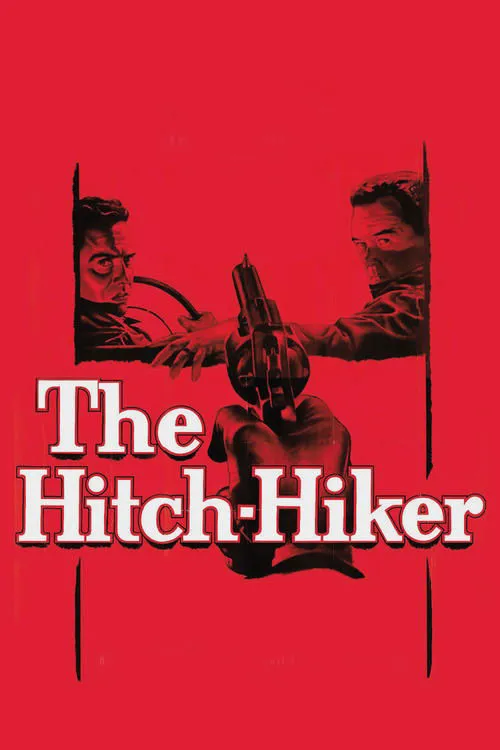The Hitch-Hiker

Plot
In the 1953 film noir thriller "The Hitch-Hiker," a classic tale of suspense and cat-and-mouse unfolds as two unsuspecting fishing buddies become entrapped in a deadly web with a sociopathic hitchhiker named Emmett. Written by Ida Lupino and Albert DeMond, and directed by the iconic actress Ida Lupino, the movie masterfully explores the darker corners of human nature, showcasing the unsettling ability of a sociopath to manipulate and toy with his unsuspecting victims. Roy and Gilbert, portrayed by Edmund O'Brien and Frank Lovejoy, are two friends who embark on a fishing trip to the Grand Canyon, seeking a relaxing break from their mundane lives. As they drive through the desert, they receive a call to stop, letting a lone hitchhiker join them in their truck. This seemingly innocuous act turns out to be a crucial mistake, for the man they pick up is none other than Emmett, a cold-blooded and cunning sociopath (played by William Talman) with a penchant for violence and a morbid curiosity about human psychology. Upon meeting Emmett, the two friends are initially taken aback by his awkward physical demeanor and bizarre gaze. Despite his unsettling presence, they are willing to give him a chance, perhaps out of a misplaced sense of pity or a naive desire to be kind to a stranger in need. However, their generosity soon turns out to be a fatal error as Emmett reveals his true nature: a ruthless and calculating individual with no qualms about taking the lives of others. Emmett's peculiar affliction – an eye that refuses to close even when he sleeps – makes him an unsettling character to observe, and adds an air of unpredictability to his actions. His ability to maintain eye contact at all times serves as a constant reminder of his unnerving presence, casting a shadow of fear over his victims and further exacerbating the sense of tension and unease. As Roy and Gilbert become trapped in a desperate bid for survival, they are forced to rely on each other's wits and resourcefulness to stay one step ahead of Emmett. The tension builds steadily as they navigate a series of precarious situations, each with the potential to become their downfall. The film masterfully exploits its confined setting, using the vast expanse of the American desert to amplify the claustrophobic and isolating atmosphere. I Lupino's expert direction adds a layer of complexity to the story, imbuing the narrative with a sense of moral ambiguity and questioning the notion of good vs. evil. By portraying Emmett as a calculating and intelligent sociopath, the film raises questions about the nature of evil and whether it is possible for someone to be born without a conscience. This nuanced approach adds depth to the characters, making it difficult to categorize them as purely good or evil, and leaves the audience wondering about the true motives of each character. The performances of the cast add to the overall sense of unease and tension, with Edmund O'Brien and Frank Lovejoy delivering convincing portrayals of two ordinary men caught in a desperate survival situation. William Talman, as Emmett, brings a mesmerizing intensity to the character, rendering him both fascinating and terrifying at the same time. In conclusion, "The Hitch-Hiker" remains a gripping and suspenseful thriller that explores the darker corners of the human psyche, raising pertinent questions about the nature of evil. Ida Lupino's masterful direction, coupled with the performances of the cast, creates a cinematic experience that is both unsettling and captivating. The film's enduring sense of tension and suspense ensures that "The Hitch-Hiker" remains a classic of the noir thriller genre, a true gem of cinematic storytelling that continues to enthrall audiences to this day.
Reviews
Recommendations




